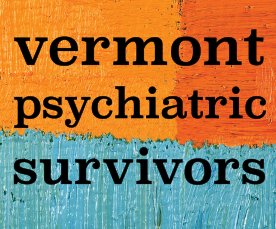MONTPELIER – A bill described as intending to protect Vermonters at risk of suicide by boosting safety through restrictions on gun owners and purchasers passed the legislature this spring. It became law without the governor’s signature.
Rep. Alyssa Black introduced “An act relating to implementing mechanisms to reduce suicide” in February. All three of its “mechanisms” related to firearms: their acquisition, possession, and storage.
The legislation cited Vermont’s 142 suicides in 2021, of which 83 (or 58%) used guns. These suicides accounted for 89% of Vermont’s deaths by firearm that year. Black’s son died by suicide in 2018 shortly after buying a gun.
Black suggested that Vermont’s troubling suicide rate – about 45% higher than the national average in 2021 – is owed to its high rate of gun ownership. Suicide attempts by other means are far less likely to achieve a lethal outcome.
“The rates of suicide in states with high gun ownership [are] double what it is in states with low gun ownership,” Black told fellow legislators. “And the interesting part is, when you look at the number of firearm suicides between the two groupings of states, they are dramatically different – when you look at suicides by all other methods, they are equal.”
First, the bill will require gun owners whose households include children or persons prohibited from possessing firearms to keep their guns locked and stored separately from their ammunition.
Second, it will extend the right to file a petition for an “extreme risk protection order” to the person’s household and family members. Such orders, if granted by a judge, can force a potentially dangerous person to relinquish their legally purchased firearms. Currently, only a state’s attorney or the Attorney General can file the petition.
Finally, the bill will impose a waiting period for gun buyers, except at gun shows. A licensed dealer will transfer the firearm 72 hours after its purchase.
In testimony before the House Committee on Judiciary, Dr. Rebecca Bell, a pediatrician at the University of Vermont Children’s Hospital, represented the Vermont Medical Society and the Vermont chapter of American Academy of Pediatrics, both of which supported the bill. She emphasized what she regarded as the particularly spontaneous nature of suicides by firearm.
“When researchers look at people who have attempted suicide with a firearm versus other methods, what they find – and this is true when I look at my cases in Vermont of young people – is… that those who choose a firearm are doing so more impulsively than those who choose another method,” she said.
“So they’ve thought about it for a shorter amount of time, they planned for it for a shorter amount of time, they are less likely to have a mental health diagnosis, they’re less likely to be involved in the mental health system, and they’re less likely to have made a prior suicide attempt.”
Much of the debate about the bill centered on its constitutionality. But Rep. Anne Donahue, who proposed a strike-all amendment in March, questioned the likely efficacy of its provisions in a state with “a large amount of gun ownership.”
Donahue pointed to what she saw as a lack of available data on relevant details of Vermont’s suicides, such as how long before the incident each victim had acquired their weapon and whether it was stored in a safe or unsafe manner at the time. She entreated the legislature to mandate a study before moving forward.
“My hunch is that there might be a case to be made for safe storage, but I don’t think we know that,” Donahue said. “I think the 72-hour hold, given the circumstances of our state, is extremely unlikely to do anything significant. But I could be wrong.” The amendment failed.
“If H. 230 is postponed for one more year and one extra person dies that wouldn’t have had to die – we’re not willing to put it off,” Black said.
A subsequent attempt to modify the bill to add police officers but to delete the addition of family and household members from among the groups able to initiate extreme risk protection order petitions also failed.

